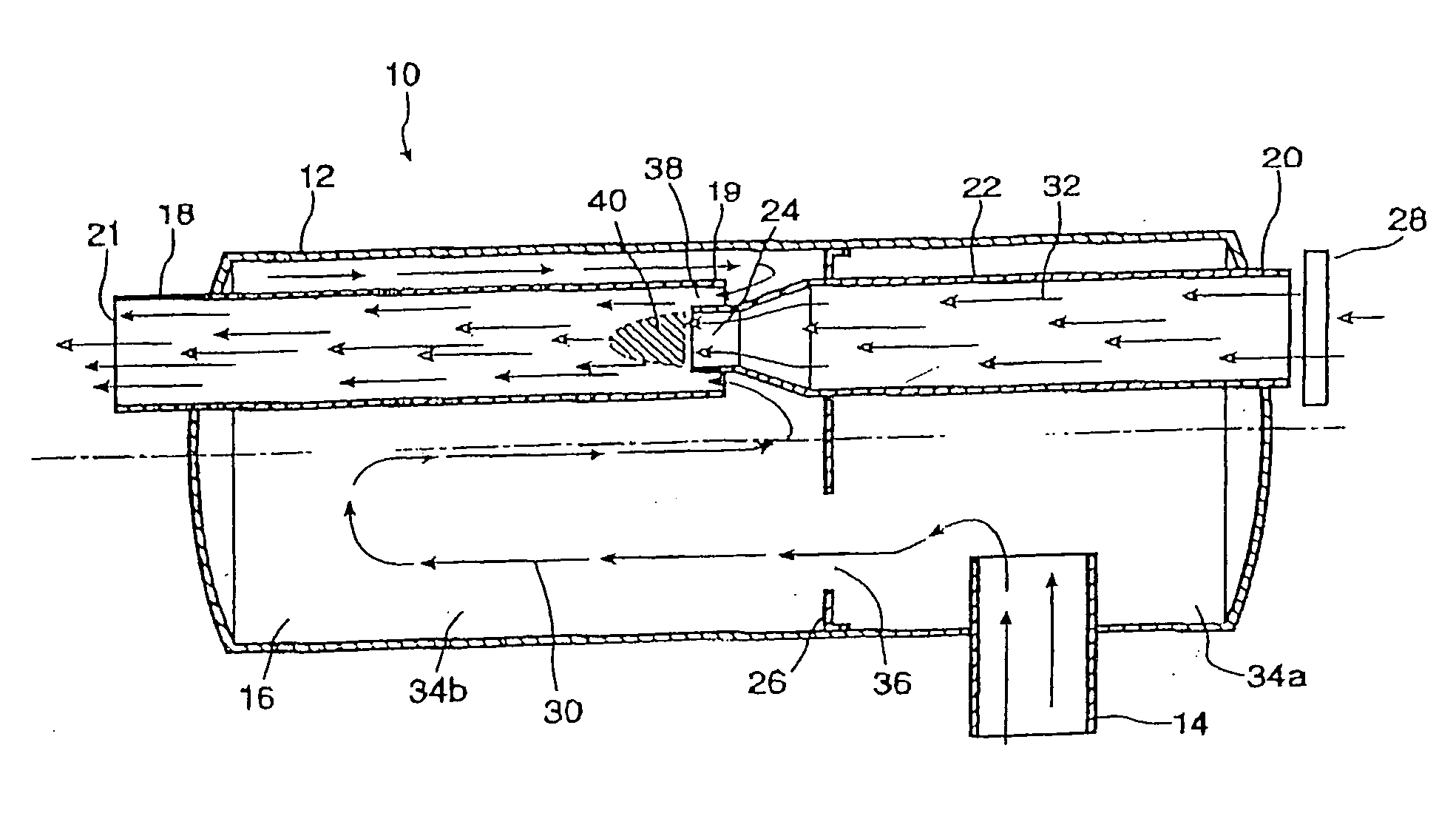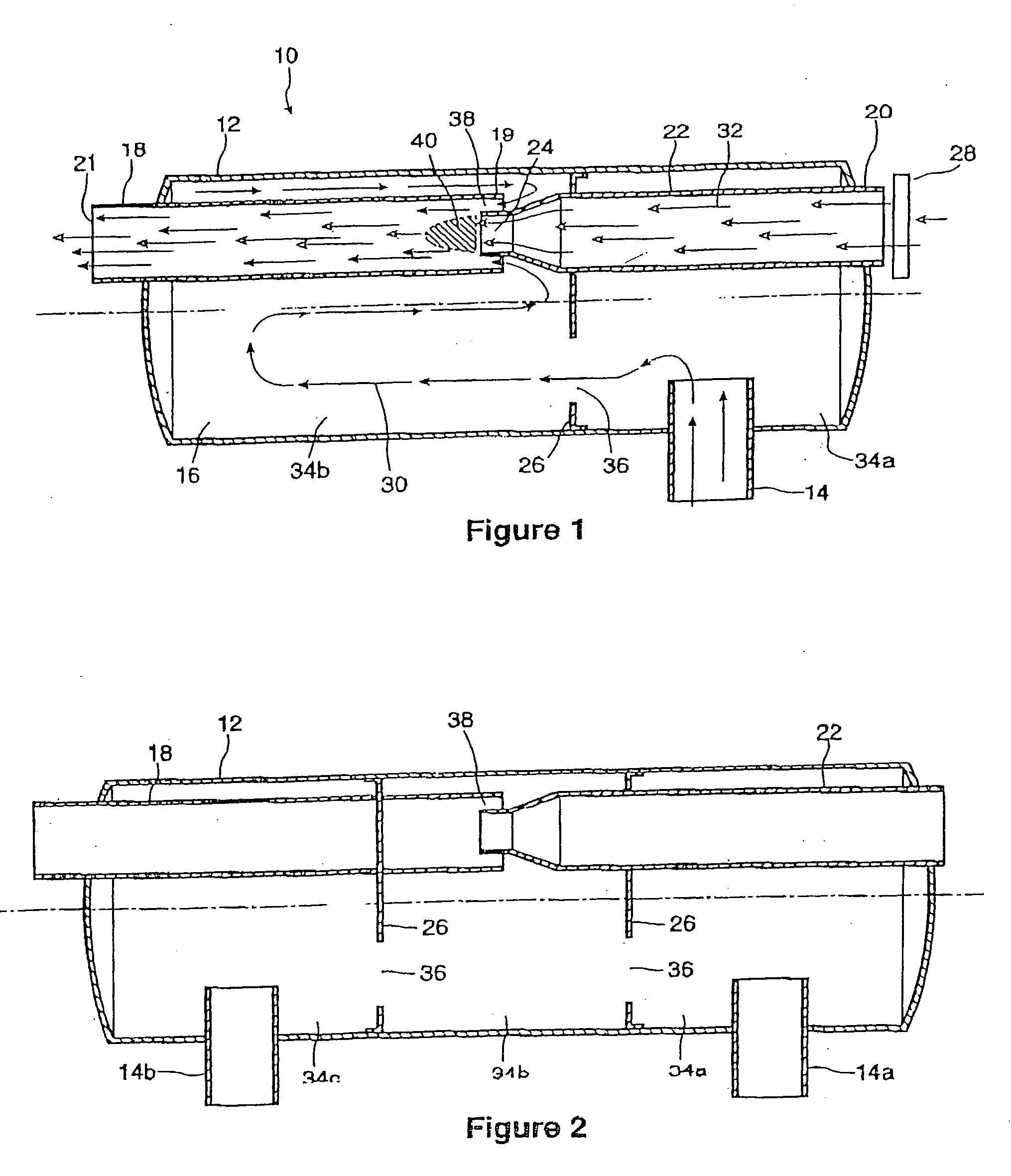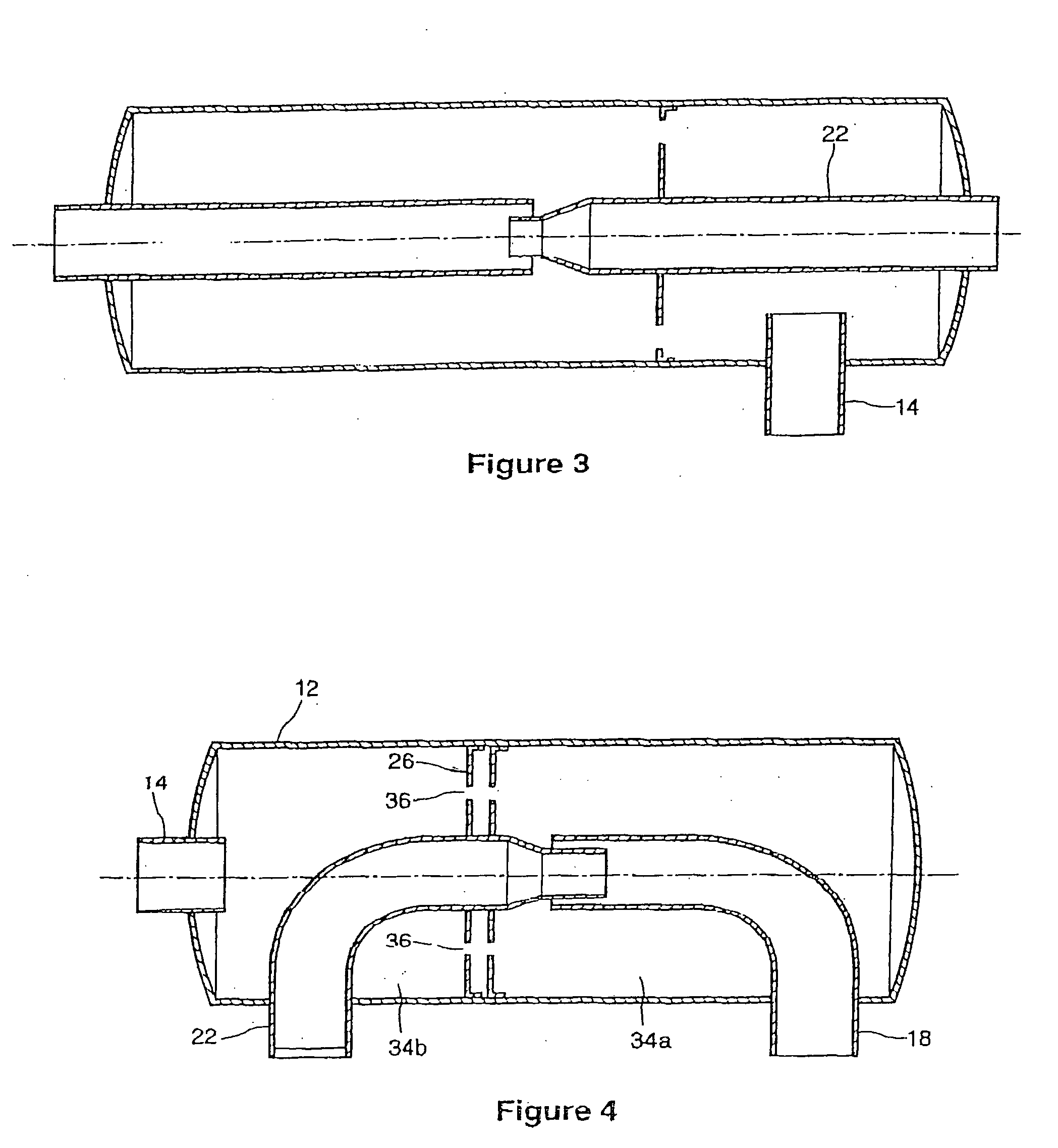Exhaust gas muffler
a technology of exhaust gas muffler and muffler body, which is applied in the direction of exhaust treatment, engine components, mechanical equipment, etc., can solve the problems of high exhaust temperature, potential safety hazards, and muffler wear, and achieve the effect of reducing the risk of muffler damage, and reducing the safety of users
- Summary
- Abstract
- Description
- Claims
- Application Information
AI Technical Summary
Benefits of technology
Problems solved by technology
Method used
Image
Examples
Embodiment Construction
[0024] The exhaust muffler of the present invention is shown in a side cross-sectional view in FIG. 1 and generally designated as 10. The exhaust muffler 10 generally comprises a body 12, at least one inlet 14, a baffled chamber 16, at least one exhaust gas outlet or tailpipe 18, at least one fresh-air inlet 20 on the body12, a heat exchange conduit 22, and a fresh-air outlet 24. The baffled chamber 16 includes at least one baffle 26, and the fresh-air inlet 20 usually includes an air filter 28. The tailpipe 18 has an input end 19 inside the baffled chamber 16 and an output end 21 located outside the muffler 10.
[0025] The exhaust muffler 10 receives exhaust gas 30 through the inlet 14 and ambient air 32 through the fresh-air inlet 20. The exhaust gas 30 and ambient air 32 are shown as a series of arrows indicating the general flow of the gas and air through the device 10. For additional clarity and to distinguish the two gases, the exhaust gas 30 is represented by an open arrowhead...
PUM
 Login to View More
Login to View More Abstract
Description
Claims
Application Information
 Login to View More
Login to View More - R&D
- Intellectual Property
- Life Sciences
- Materials
- Tech Scout
- Unparalleled Data Quality
- Higher Quality Content
- 60% Fewer Hallucinations
Browse by: Latest US Patents, China's latest patents, Technical Efficacy Thesaurus, Application Domain, Technology Topic, Popular Technical Reports.
© 2025 PatSnap. All rights reserved.Legal|Privacy policy|Modern Slavery Act Transparency Statement|Sitemap|About US| Contact US: help@patsnap.com



